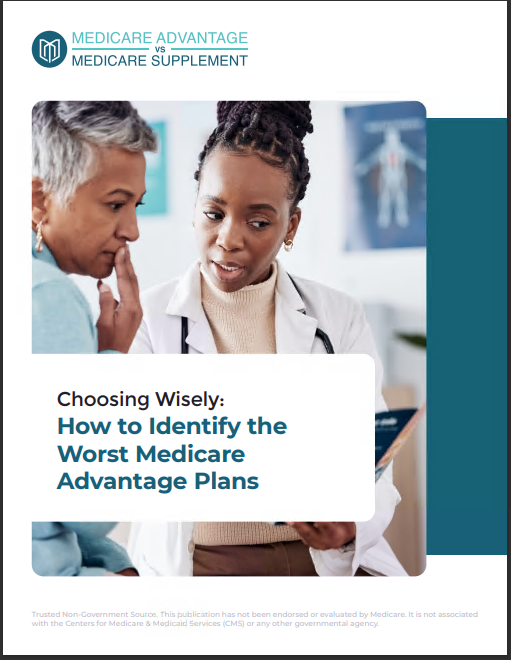Key Takeaways
-
Medicare eligibility rules in 2025 require careful attention to age-specific enrollment windows and ongoing coverage requirements to avoid gaps or penalties.
-
Being proactive about understanding your Medicare options can significantly reduce the risk of losing essential health benefits down the line.
Navigating the New Medicare Landscape of 2025
Medicare in 2025 looks somewhat different from previous years, making it essential to stay informed about your eligibility and enrollment requirements. If you’re nearing retirement age or have just turned 65, understanding how Medicare eligibility works can mean the difference between seamless healthcare coverage and costly mistakes.
Let’s break down exactly what you need to know.
Understanding Medicare Eligibility: Who Qualifies?
Medicare eligibility remains broadly consistent, but there are crucial details you need to remember:
-
You automatically qualify at age 65 if you’ve paid into Medicare through payroll taxes for at least 10 years (40 quarters).
-
Younger individuals qualify under specific circumstances, such as disability or end-stage renal disease (ESRD).
However, eligibility doesn’t guarantee automatic enrollment in all Medicare parts. You must actively choose and enroll in certain coverages during defined enrollment periods.
Don’t Miss These Enrollment Windows!
Missing your initial enrollment period can lead to significant delays, coverage gaps, or financial penalties. Here’s how the timing breaks down:
Your Initial Enrollment Period (IEP)
This crucial period lasts for seven months, beginning three months before your 65th birthday, including your birth month, and ending three months after your birthday month.
-
Enroll early to ensure your coverage begins as soon as possible.
-
If you enroll late, your coverage start date could be delayed, leading to months without coverage.
General Enrollment Period (GEP)
If you missed your IEP, the General Enrollment Period runs from January 1 to March 31 each year. Coverage starts July 1.
-
Late enrollment penalties could permanently increase your monthly premiums.
Annual Enrollment Period (AEP)
Running from October 15 to December 7 annually, this period lets you make changes to your existing Medicare coverage. All changes become effective on January 1.
-
It’s your chance to switch from Original Medicare to Medicare Advantage or vice versa, or to change your prescription drug coverage.
Critical Facts About Medicare Parts A, B, and D in 2025
Understanding each part of Medicare helps ensure you select the right coverage.
Medicare Part A (Hospital Coverage)
-
Covers inpatient hospital stays, skilled nursing facilities, hospice, and some home health care.
-
Premium-free for most people who paid Medicare taxes for at least 10 years.
-
If you worked less, your premiums in 2025 could be as high as $518 per month.
Medicare Part B (Medical Insurance)
-
Covers outpatient care, doctor visits, preventive services, and more.
-
The standard Part B monthly premium for 2025 is $185.
-
Part B has a yearly deductible of $257 before coverage kicks in.
Medicare Part D (Prescription Drug Coverage)
-
Essential for reducing the cost of prescription medications.
-
The maximum deductible for Part D plans in 2025 is $590.
-
Beneficiaries now benefit from a new $2,000 annual cap on out-of-pocket prescription expenses, providing relief from high medication costs.
Staying Eligible: How to Avoid Coverage Pitfalls
It’s not just about initial enrollment. Staying eligible requires continuous attention:
-
Continue Paying Premiums: Missing payments can result in loss of coverage and possible penalties when re-enrolling.
-
Report Changes Promptly: Notify Medicare about life changes like address shifts or marriage, ensuring your coverage remains accurate and continuous.
-
Annual Reviews: Always review your Annual Notice of Change (ANOC) to understand upcoming changes to your Medicare plan.
Working Past 65? Special Rules Apply
If you’re planning to work beyond age 65, special Medicare enrollment rules apply:
-
If covered by employer health insurance from a company with more than 20 employees, you can delay Medicare enrollment without penalties.
-
You have eight months after your employment or your employer’s insurance ends to enroll without penalties.
Waiting longer than this can result in penalties and coverage gaps.
What if You’re Under 65?
Individuals younger than 65 can also qualify for Medicare:
-
You qualify if you receive Social Security Disability Insurance (SSDI) for at least 24 consecutive months.
-
ESRD or Amyotrophic Lateral Sclerosis (ALS) diagnosis also grants immediate eligibility.
Even if you’re younger, timely enrollment is critical to ensuring continuous coverage.
Watch Out for Costly Mistakes
Medicare eligibility comes with pitfalls that are easy to avoid if you’re informed:
-
Mistake #1: Assuming automatic enrollment for Part B or D. Enrollment isn’t always automatic; you must actively enroll.
-
Mistake #2: Ignoring late enrollment penalties. Penalties increase premiums permanently for late signups.
-
Mistake #3: Assuming Medicare covers everything. Gaps exist, so supplemental coverage may be necessary.
Changes in 2025: What’s Different Now?
2025 brought significant updates to Medicare:
-
The Medicare Part D coverage gap (donut hole) no longer exists. A $2,000 cap on annual out-of-pocket prescription drug expenses replaces it.
-
Medicare Advantage plans might have stable or slightly lower premiums compared to previous years, increasing their attractiveness.
-
New mid-year notifications help you track unused supplemental benefits to maximize your coverage.
Keeping updated on these changes helps you make smarter decisions.
Protecting Your Coverage Long-Term
Medicare eligibility is not a one-time decision. Maintaining your coverage and avoiding unexpected gaps demands ongoing effort:
-
Annual Reviews: Regularly review your coverage during Annual Enrollment Periods.
-
Financial Planning: Include potential premium changes or unexpected costs in your retirement budgeting.
-
Professional Advice: Consulting a licensed agent can help you navigate complex Medicare decisions effectively.
Ensuring Smooth Transitions Between Plans
Switching between Original Medicare, Medicare Advantage, or supplemental plans is possible but requires careful planning:
-
Confirm new coverage before canceling your existing plan to avoid coverage gaps.
-
Understand the limitations and strengths of each Medicare plan option to prevent costly surprises later.
Special Situations: Moving and Medicare
Relocating affects Medicare coverage. Notify Medicare if you move because:
-
New address might change your plan availability or provider network.
-
You qualify for a Special Enrollment Period (SEP) if moving outside your plan’s coverage area.
Take advantage of this window to reassess your Medicare needs based on your new location.
Getting the Most Out of Your Medicare Coverage
To maximize your Medicare benefits in 2025:
-
Regularly check the benefits your current Medicare plan provides.
-
Use preventive care services to maintain health and avoid expensive treatments down the line.
-
Seek help from a licensed professional who can guide you through complex Medicare choices.
Your Next Steps to Maintain Medicare Eligibility
Staying informed about Medicare eligibility and enrollment requirements significantly reduces your chances of losing coverage. Whether you’re enrolling for the first time or evaluating your current coverage, professional guidance helps clarify your options and ensures continuous coverage.
Don’t navigate these decisions alone—contact a licensed agent listed on this website for personalized, professional Medicare advice today.









